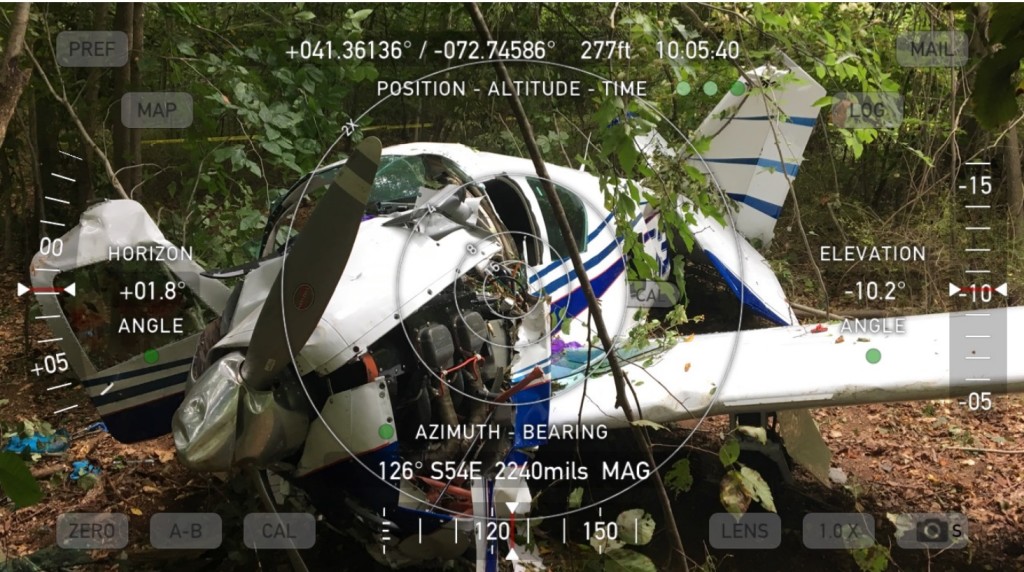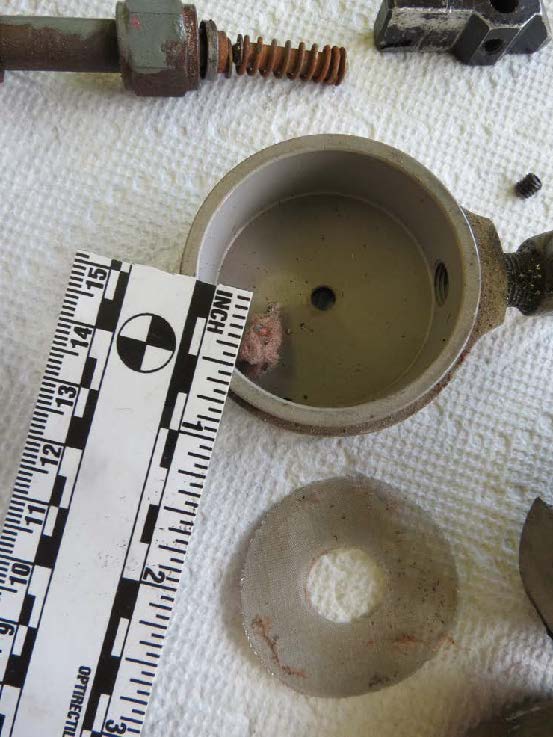NASCAR Driver Ted Christopher and Pilot Died in Mooney M20C Fuel Starvation FOD Accident (N53CP)
On 16 September 2017 Mooney M20C, N53CP was destroyed when it impacted trees near North Branford, Connecticut. The pilot and his passenger, NASCAR driver Ted Christopher, were fatally injured.
History of the Accident Flight
The 81 year old retired airline pilot departed Francis S. Gabreski Airport (FOK), Westhampton Beach, New York about 1000 for Robertson Field (4B8), Plainville, Connecticut to pick the passenger up for a subsequent return flight to at 1230 FOK where the passenger would be participating in a NASCAR race at the Riverhead Raceway that afternoon. The flights were conducted as private flights under Part 91.
The US National Transportation Safety Board (NTSB) explain in their safety investigation report (released in December 2019) that:
The pilot [who owned the aircraft] and passenger were friends and had been flying together for over 10 years; they and had flown this route many times according to friends.
Review of radar data obtained from the United States Air Force 84th Radar Evaluation Squadron (RADES) revealed radar targets that were coincident with the accident flight. A radar target first appeared about 1242 about 10 miles south of 4B8 and about 1,200 ft mean sea level (msl). A radar track continued south-southeast for about 9 minutes. The airplane remained at altitudes between about 1,200 and 1,600 ft msl (about 900 to 1,300 feet above ground level) until radar contact was lost about 1 mile northwest of the accident site.
Several individuals near the accident site reported that they heard the sound of the impact, but there were no witnesses to the accident.
NTSB Safety Investigation and Analysis
The propeller exhibited signatures consistent with a lack of engine power at the time of impact. The fuel selector was found in the left tank position and the landing gear was extended. There was evidence of fuel in both tanks at the accident site.
Examination of the fuel system revealed that air would not pass through the fuel selector valve with the valve selected to the left fuel tank position. The handle was operated by hand and could be moved normally between the settings. Air passed freely through the valve when selected to the right tank position.
Disassembly of the fuel selector revealed a piece of red, fibrous material consistent with a shop towel that likely inhibited fuel flow to the engine and resulted in fuel starvation and a total loss of engine power. The rounded mass was about 5/8 inches in length and about 3/8 inches in width. Fibers also covered about 5% of the fuel drain screen.
The airplane’s maintenance logs were not found and when the shop towel debris may have been introduced to the fuel system could not be determined.
Additionally, a homemade tool constructed of PVC pipe and connection fittings was found in the wreckage that appeared to be designed to manipulate the fuel selector; however, the reason for its fabrication and use during the accident flight could not be determined. The device was broken at its handle.
Following the loss of engine power, the pilot may have attempted to switch the fuel selector from the left tank to the right tank and was unable to do so, either due to a failure of his homemade tool or to the inadequate time afforded to troubleshoot the loss of engine power due to his selection of a low cruising altitude, or a combination of the two factors.
The airplane’s low cruising altitude also reduced the pilot’s available forced landing site options after the engine lost power. It is likely that the pilot was attempting to reach an open field that was about 1,500 ft beyond the accident site and had lowered the landing gear in preparation for landing, but due to the airplane’s low altitude, it was unable to reach the field and impacted trees.
NTSB Probable Cause
A total loss of engine power due to fuel starvation as the result of foreign object debris in the fuel selector valve.
Contributing to the accident was the pilot’s selection of a low cruising altitude, which reduced the available time to troubleshoot the loss of engine power and afforded fewer forced landing site options, and improper maintenance of the airplane, which allowed a portion of a shop towel into the fuel system.
Other Safety Resources
- Maintenance Human Factors: The Next Generation
- Airworthiness Matters: Next Generation Maintenance Human Factors
- Insecure Pitch Link Fatal R44 Accident
- Robinson R44 Power Loss: Excessive Lubricant
- Helicopter Throttle Bracket Left Unsecured After Maintenance
- Micro FOD: Cessna 208B Grand Caravan Engine Failure & Forced Landing
- Flying Control FOD: Screwdriver Found in C208 Controls
- Coking Causes Power Loss: Australian AS350BA
- EC130B4 Destroyed After Ice Ingestion – Engine Intake Left Uncovered
- Torched Tennessee Tour Trip (B206L N16760)
- UPDATE 8 April 2020: NTSB Confirms United Airlines Maintenance Error After 12 Years
- UPDATE 4 July 2020: A Baffled Attitude Fuel Starvation Accident
Video: Inside Look: Owning and Flying a Vintage Mooney







Recent Comments